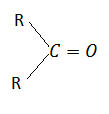Benzene reacts with n-propyl chloride in the presence of anhydrous to give
(a) 3-propyl-1-chlorobenzene
(c) n-propyl benzene
(c) no reaction
(d) iso-propyl benzene
बेंजीन किसे देने के लिए निर्जल की उपस्थिति में n-प्रोपिल क्लोराइड के साथ अभिक्रिया करता है?
(a) 3-प्रोपिल-1-क्लोरोबेंजीन
(c) n-प्रोपिल बेंजीन
(c) कोई अभिक्रिया नहीं
(d) आइसो-प्रोपिल बेंजीन
Silver acetylide when heated with HCl gives:
(a) (b)
(c) (d)
सिल्वर एसिटैलाइड जब HCl के साथ गर्म किया जाता है, तो देता है:
(a) (b)
(c) (d)


(a) Wolff-Kishner reaction
(b) Clemmensen reduction
(c) red P + HI at
(d) Wurtz's reaction


(a) वोल्फ-किशनर अभिक्रिया
(b) क्लीमेन्सन अपचयन
(c) पर लाल P + HI
(d) वुर्ट्ज़ अभिक्रिया
The correct order of reactivity of I,II and III towards addition reactions is:
(a) I>III>II (b) I>II>III (c) III>II>I (d) III>I>II
संयोजन अभिक्रियाओं के प्रति I, II और III की अभिक्रियाशीलता का सही क्रम है:
(a) I>III>II (b) I>II>III (c) III>II>I (d) III>I>II
= CH2(A); (A) is:
(a)
(b)
(c)
(d) CH3--CH2-CH=CH2
= CH2(A), (A) क्या है?
(a)
(b)
(c)
(d) CH3--CH2-CH=CH2
What is the major product expected from the following reaction?
Product
1. 
3. 
निम्नलिखित अभिक्रिया से क्या मुख्य उत्पाद अपेक्षित है?
उत्पाद
1. 
3. 
cis-2-butene Product of the reaction is :
(a) Racemic
(b) Diastereomer
(c) Meso
(d) E and Z isomer
समपक्ष-2-ब्यूटीन अभिक्रिया का उत्पाद क्या है?
(a) रेसिमिक
(b) अप्रतिबिंबी त्रिविम समावयव
(c) मेसो
(d) E और Z समावयवी
The major product of the following reaction is:
(a)
(b)
(c)
निम्नलिखित अभिक्रिया का मुख्य उत्पाद क्या है?
(a)
(b)
(c)
Which of the following compouinds would liberate two moles of methane when treated with methyl magnesium bromide?
| (1) |  |
| (2) | |
| (3) |  |
| (4) |  |
मेथिल मैग्नीशियम ब्रोमाइड के साथ उपचारित करने पर, निम्नलिखित में से कौन सा यौगिक मेथेन के दो मोल को मुक्त करेगा?
| (1) |  |
| (2) | |
| (3) |  |
| (4) |  |







 ; Product (P) is :
; Product (P) is :
 , उत्पाद (P) क्या है?
, उत्पाद (P) क्या है?





